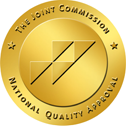Opiate abuse is a growing problem among teens today. The most commonly abused opiate drugs are prescription painkillers, but as many as 40 percent of teens don’t perceive any major risk with trying heroin once or twice (NSUDH). According to a study by the National Center on Addiction and Substance Abuse at Columbia University, the number of teens who abuse prescription drugs has nearly tripled since 1992. Teens abuse prescription drugs more than any other illicit drug except for marijuana — more than cocaine, methamphetamine and heroin combined. In fact, five out of the six most frequently abused drugs among high school seniors are prescription medications (Monitoring the Future Survey), and prescription medications are the number-one most frequently abused drugs among 12- to 13-year-olds (National Survey on Drug Use and Health). By learning what parents should know about opiate use, you can hopefully prevent your teen from abusing and becoming addicted to opiates.
What are the most commonly abused opiate drugs?
The most commonly abused opiate drugs are heroin, Vicodin (hydrocodone), OxyContin (oxycodone), Darvon (propoxyphene), Diluadid (hydromorphone), morphine, fentanyl, codeine, and other related prescription painkillers.
What are some signs my child is using opiates?
* Unexplained mood changes/mood swings
* Unpredictable behavior
* Changes in eating or sleeping patterns
* Unexplained drowsiness, confusion, nausea, constipation, slowed breathing (all signs of opioid use)
* Slurred speech
* Constricted pupils
* Euphoria
* Signs of injection, such as track marks, bumps and infected sores
* Poor hygiene
* Drug paraphernalia
* Runny nose
* Change in friends
* Missing money, prescription drugs or cough medicines from the home
* Slipping grades
* Loss of interest in activities he or she once enjoyed
How are opiates used?
Opiates can be taken orally, crushed into a powder for snorting, or injected.
What are some of the dangers of opiate use?
Misusing or abusing opiates can easily lead to addiction and overdose. Abusing opiate painkillers can cause kidney problems, liver failure and result in death, especially when combined with alcohol. Abusing heroin can lead to collapsed veins; blood infections (such as HIV/AODS, Hepatitis B and C); bacterial infections; heart, liver and kidney disease; and permanent damage to vital organs. The strength of heroin also varies from dose to dose with unpredictable effects, so the user never knows what might happen with their next hit.
What are some facts and statistics on teens and opiate use?
* The abuse of prescription painkillers by young adults rose more than 12 percent between 2002 and 2007. (SAMHSA)
* Nearly one in five teens report abusing prescription drugs not prescribed to them. (PATS, 2006)
* The number of poison deaths caused by prescription medication abuse increased 62.5 percent from 1999 to 2004. (CDC, 2007)
* One-third of teens believe there’s ‘nothing wrong’ with using prescription drugs every once in a while, and 4 out of 10 teens agree that prescription drugs are safer to use than illegal drugs, even if they’re not prescribed by a doctor. (PATS, 2006)
* More than half of teens agree that prescription drugs are easier to get than illegal drugs. (PATS, 2006)
* Three out of 10 teens believe that prescription pain relievers are not addictive. (PATS, 2006)
* Almost 40 percent of teens don’t perceive any great risk in trying heroin once or twice. Almost 19 percent of teens don’t perceive any great risk in trying heroin once or twice a week. (SAMHSA, 2006)
* 14.4 percent of teens say that it would be ‘fairly easy’ or ‘very easy’ for them to find heroin if they wanted it. (SAMHSA, 2006)
* Among teens that had episodes of major depression, 34.6 percent had used illicit drugs, such as heroin, during the same period. (SAMHSA)
What can I do to prevent opiate use in my teen?
* Be alert about warning signs.
* Discuss the dangers of drug use with your child. According to the Partnership for a Drug-Free America, teens are 50 percent less likely to use drugs if they learn the risks of drug use from their parents.
* Monitor your teen’s whereabouts and get to know their friends and their friends’ parents.
* Take action if you see any signs of abuse or sense that something is wrong. Don’t wait or the abuse could turn into an addiction.
How do I choose a teen opiate rehab?
An opiate rehab is essential for teens who abuse opiates. Without treatment, the addiction will only grow worse. When deciding on a rehab, you should focus on which types of treatment they offer, staff credentials, if they have the proper licensing, what types of aftercare programs they offer to prevent relapse. You’ll want to decide if your teen needs residential or out-patient rehab, assisted detox, or treatment for a dual diagnosis of a co-occurring disorder. Talking to a medical doctor about your teen’s symptoms can help you determine what type of treatment you should seek.




